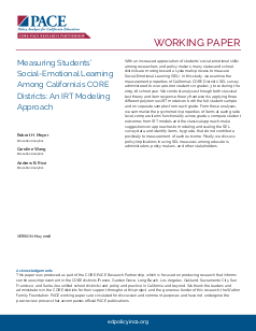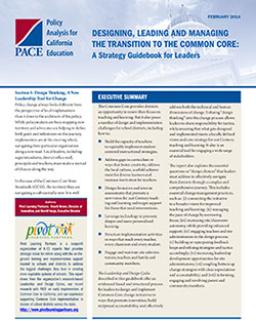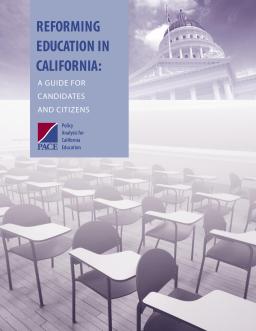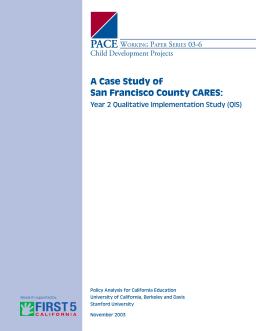Published
Summary
California's K-12 public school districts, institutions of higher education, and community organizations are collaborating to improve educational and labor market outcomes. This Resource Guide, based on a qualitative research project, provides intersegmental partnerships with tools to support the development, planning, and monitoring of their data practices. The guide includes critical components of effective strategies for data sharing and use, and can be used as a framework, reflection tool, and networking resource.
An IRT Modeling Approach
Published
Summary
This study examines the properties of California's CORE Districts' SEL survey, which measures social-emotional learning in students. The survey was given to over 400,000 students in grades 3-12. The study uses both classical test theory and item response theory frameworks to analyze the data and make recommendations for modeling and scaling SEL survey data. Policy implications are discussed for educators, administrators, policy makers, and other stakeholders.
A Strategy Guidebook for Leaders
Published
Summary
The Common Core presents challenges for school districts in teaching and learning. This guidebook provides evidence-based solutions to build teacher capacity, address curriculum gaps, design assessments, leverage technology, engage stakeholders, and manage change. It emphasizes the importance of design thinking, focusing on essential change management practices, and connecting the initiative to a broader vision for improved teaching and learning. The goal is to promote innovation, build reciprocal accountability, and effectively address both technical and human dimensions of change.
Published
Summary
The Common Core State Standards (CCSS) aim to improve public education by increasing expectations, deepening subjects, and providing an active curriculum. These goals include addressing disparities in U.S. student performance, reducing remediation rates, improving workplace readiness, and promoting civic participation. Equitable CCSS implementation can help close opportunity and achievement gaps affecting low-income, minority, and English learner students, with all standards expected of all students. California has a unique chance to improve education by implementing the CCSS effectively.
A Guide for Citizens and Candidates
Published
Summary
PACE has published a policy book to support informed debates about the issues facing California education. The book includes recommendations to improve education quality, targeting resources to those who need it most, giving local schools more flexibility, and designing policies for continuous improvement. While there's no one solution to fix public education, a series of good policies can bring about fundamental reform and improve outcomes for schools and students.
Year 2 Qualitative Implementation Study (QIS)
Published
Summary
This paper assesses the perspectives and experiences of stakeholders on San Francisco County’s CARES program, a childcare retention–incentive program. Year 2 saw over a threefold increase in the number of stipends awarded, but recipients felt the program couldn't address ECE staff retention/turnover alone. Solutions need to be implemented within a larger system of support, raising public awareness, expanding professional development opportunities, and exerting pressure on policymakers for sustained funding to augment ECE staff salaries.





